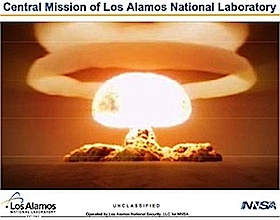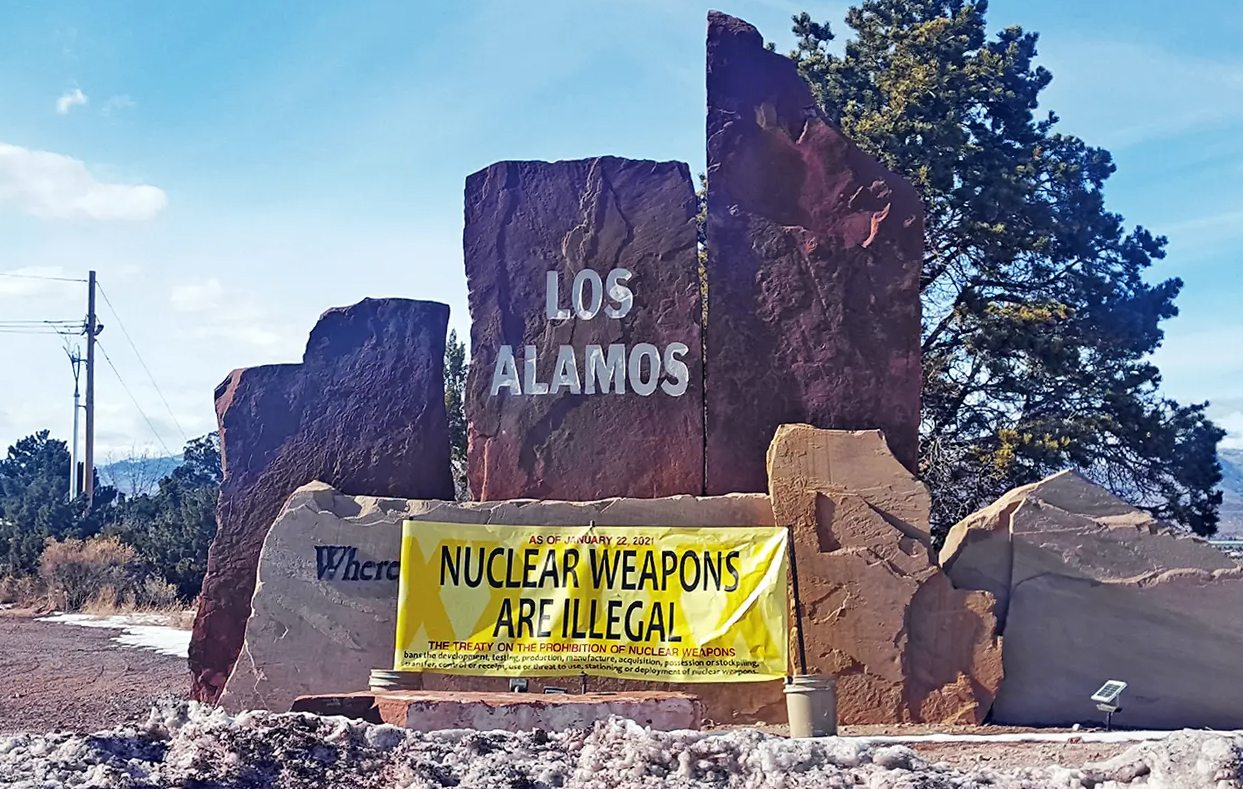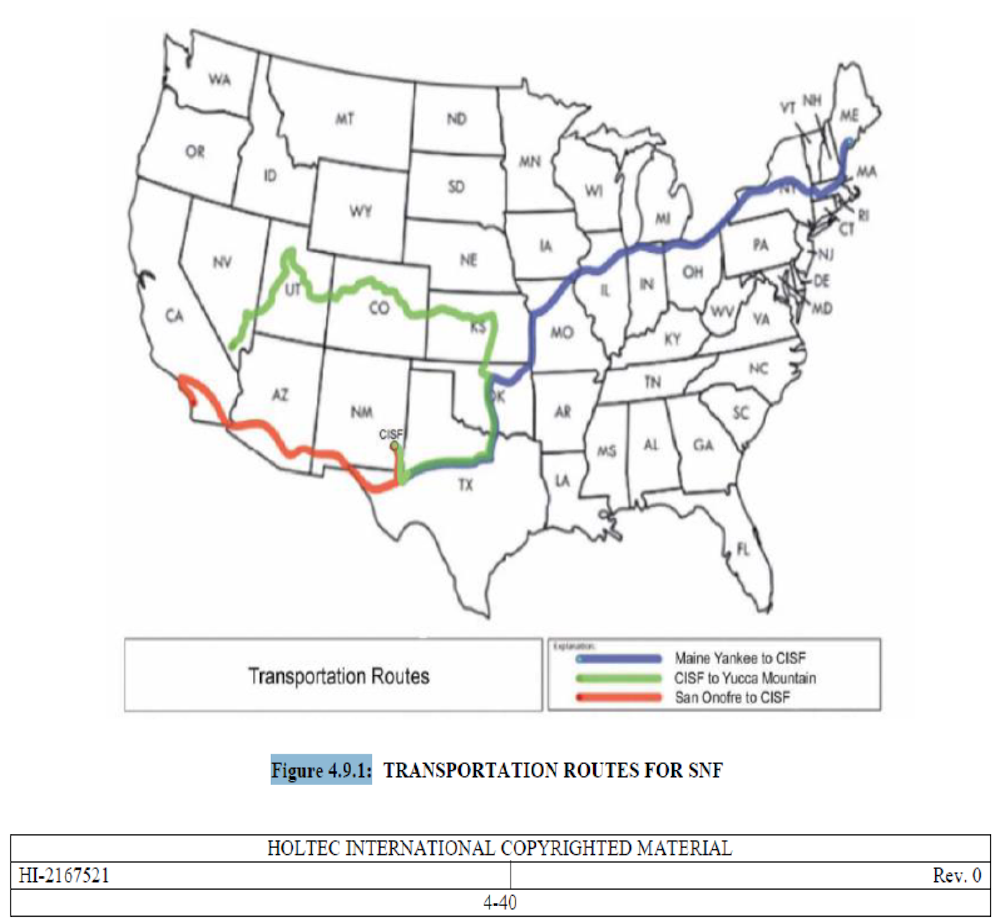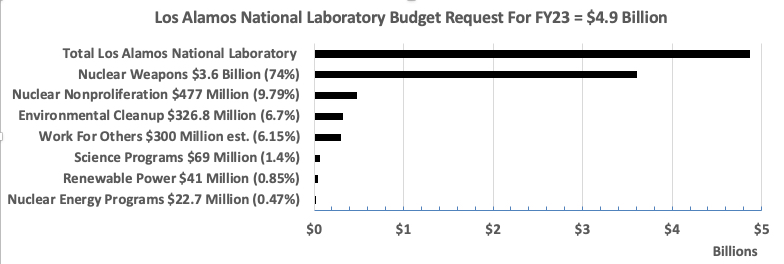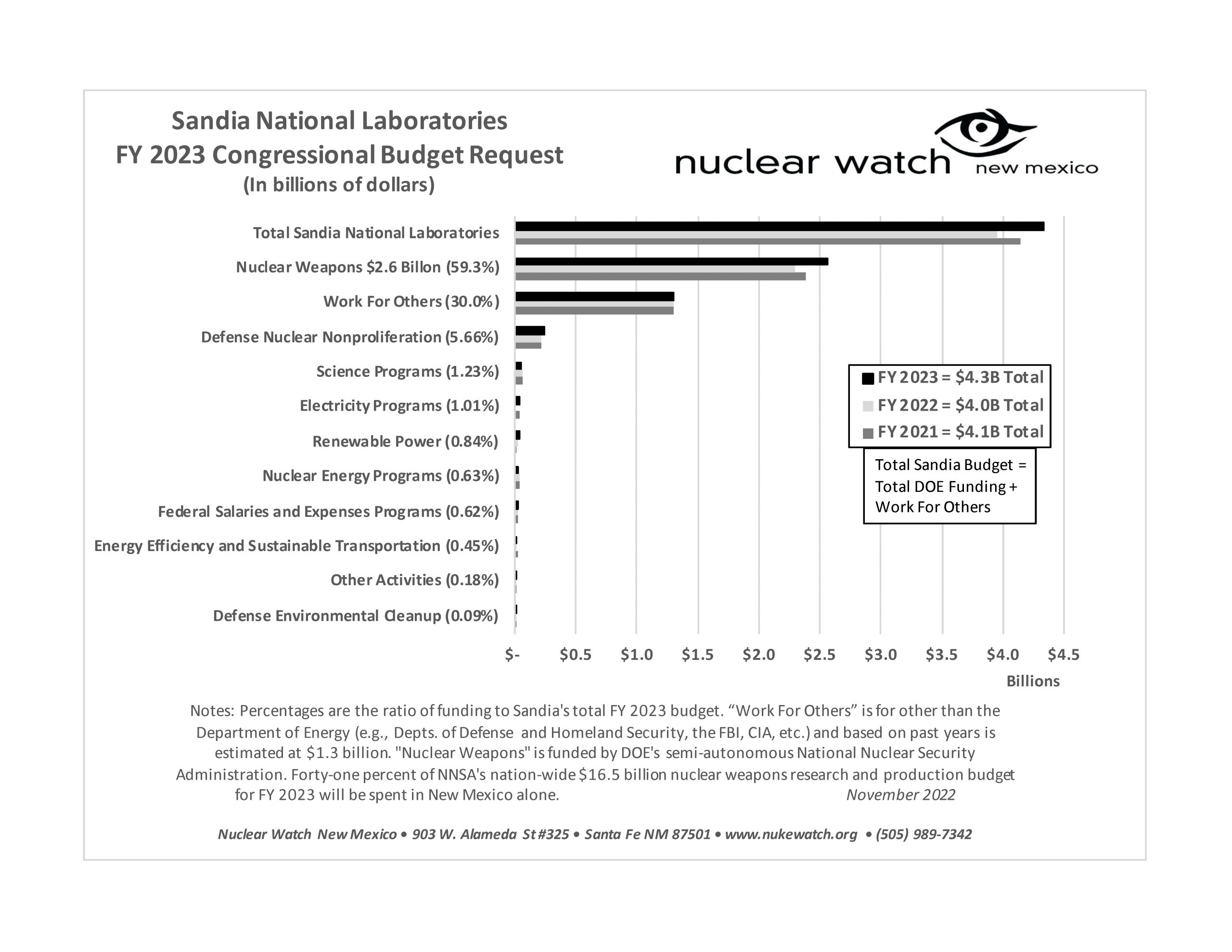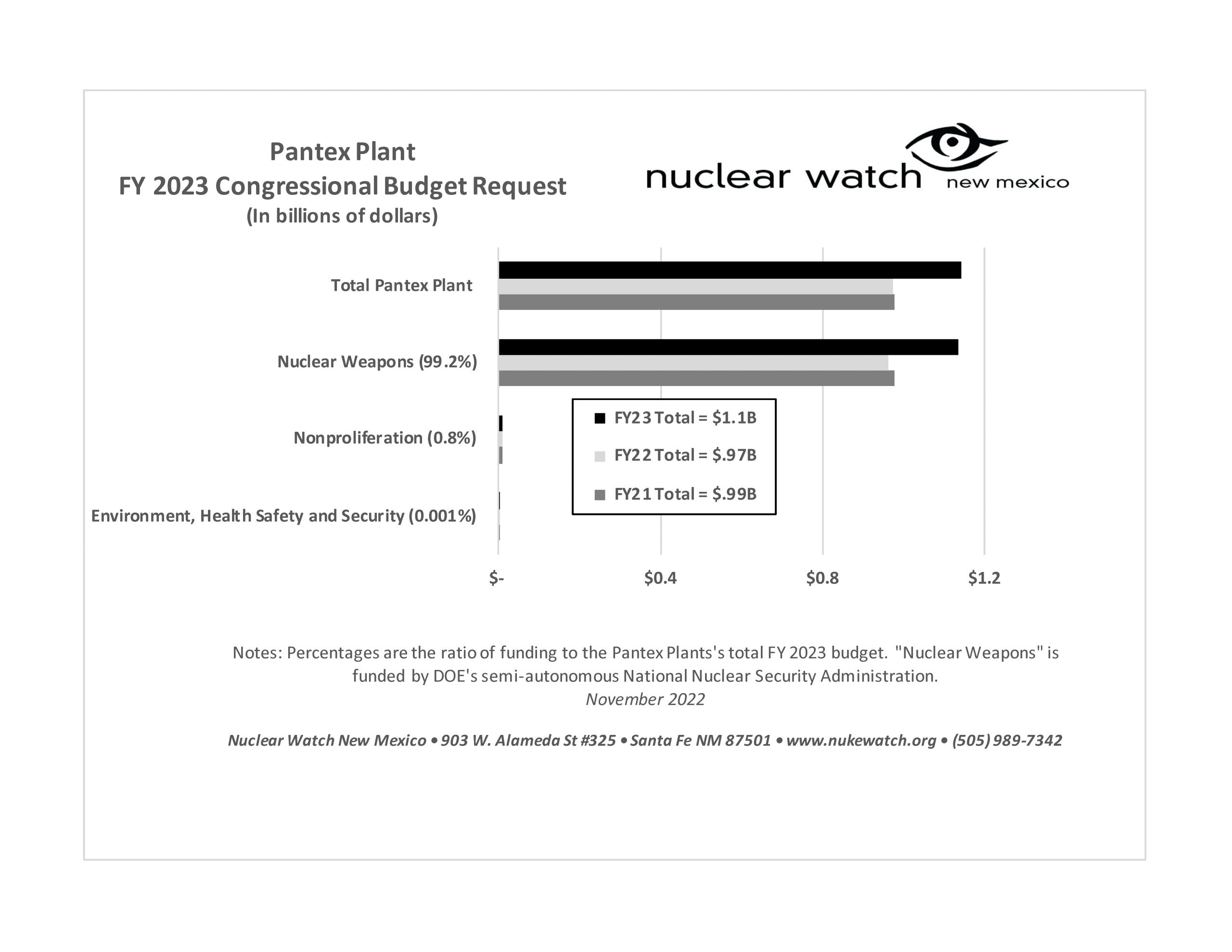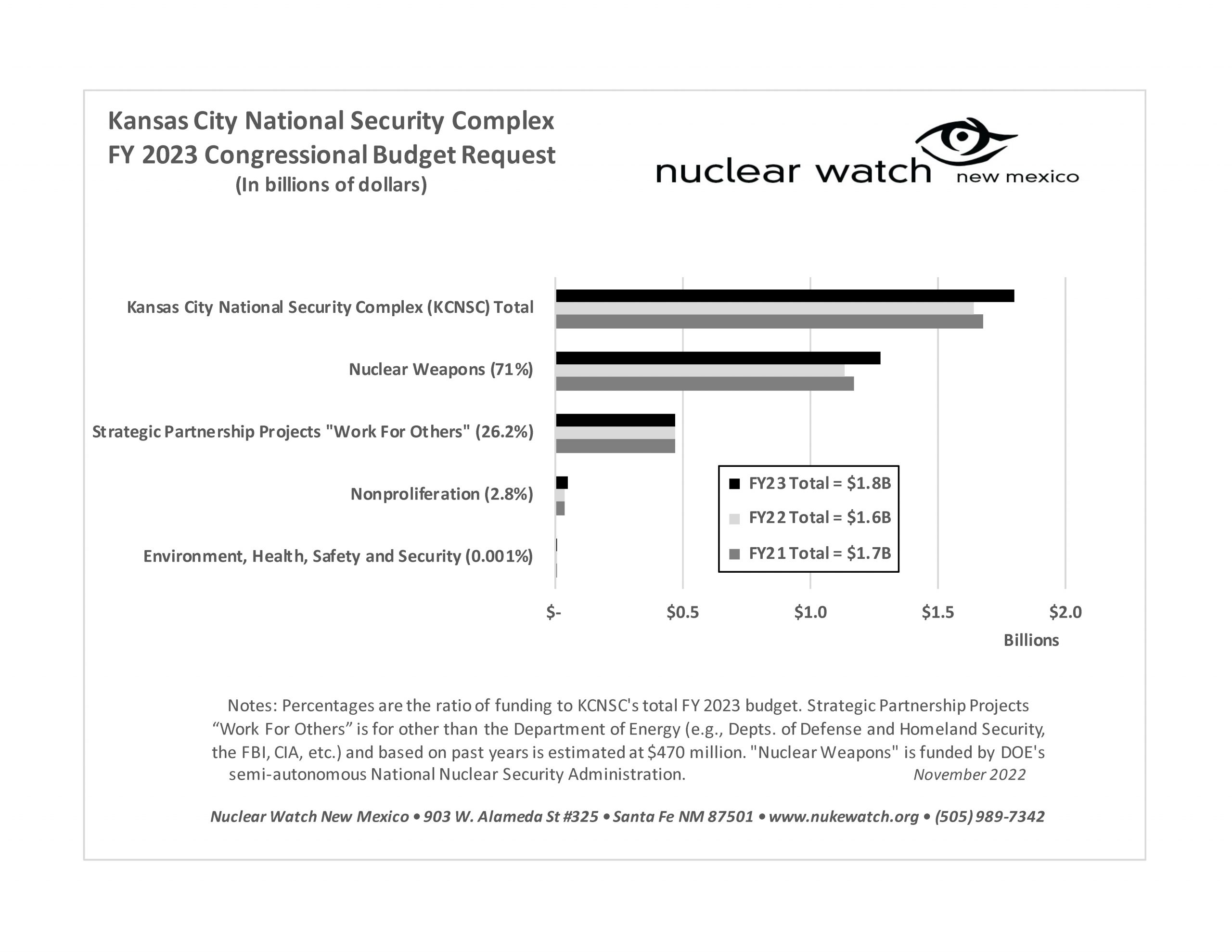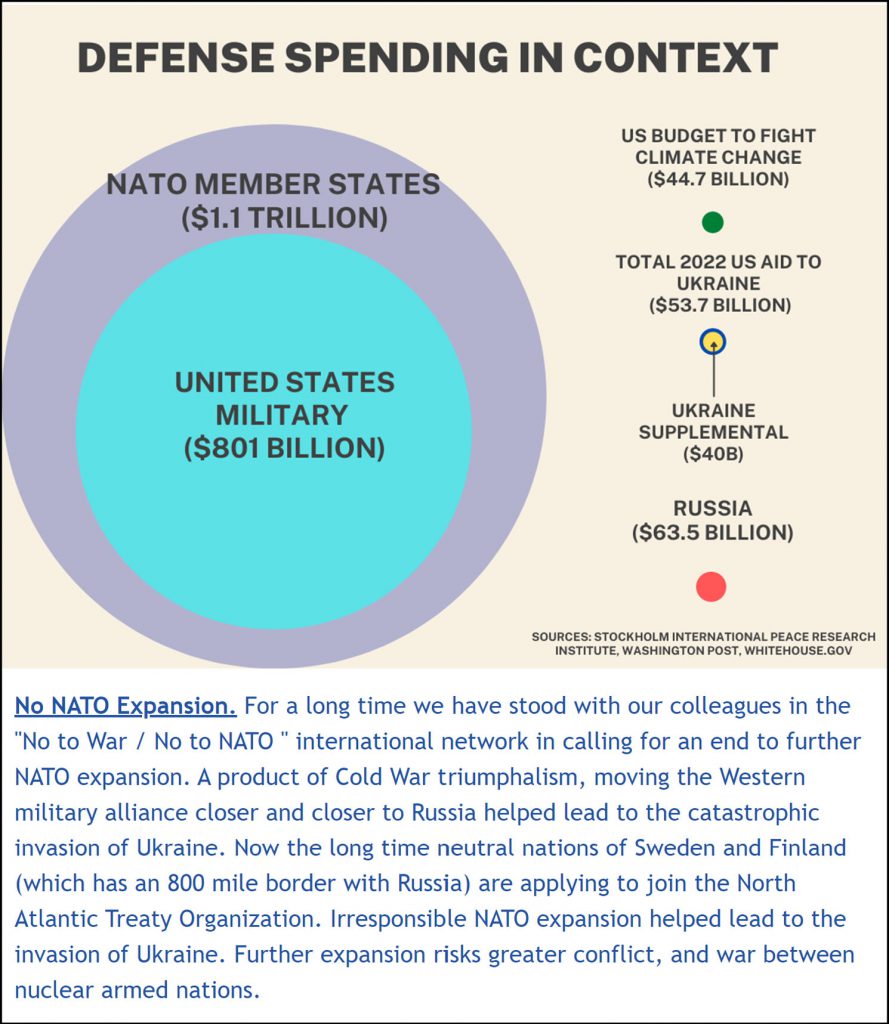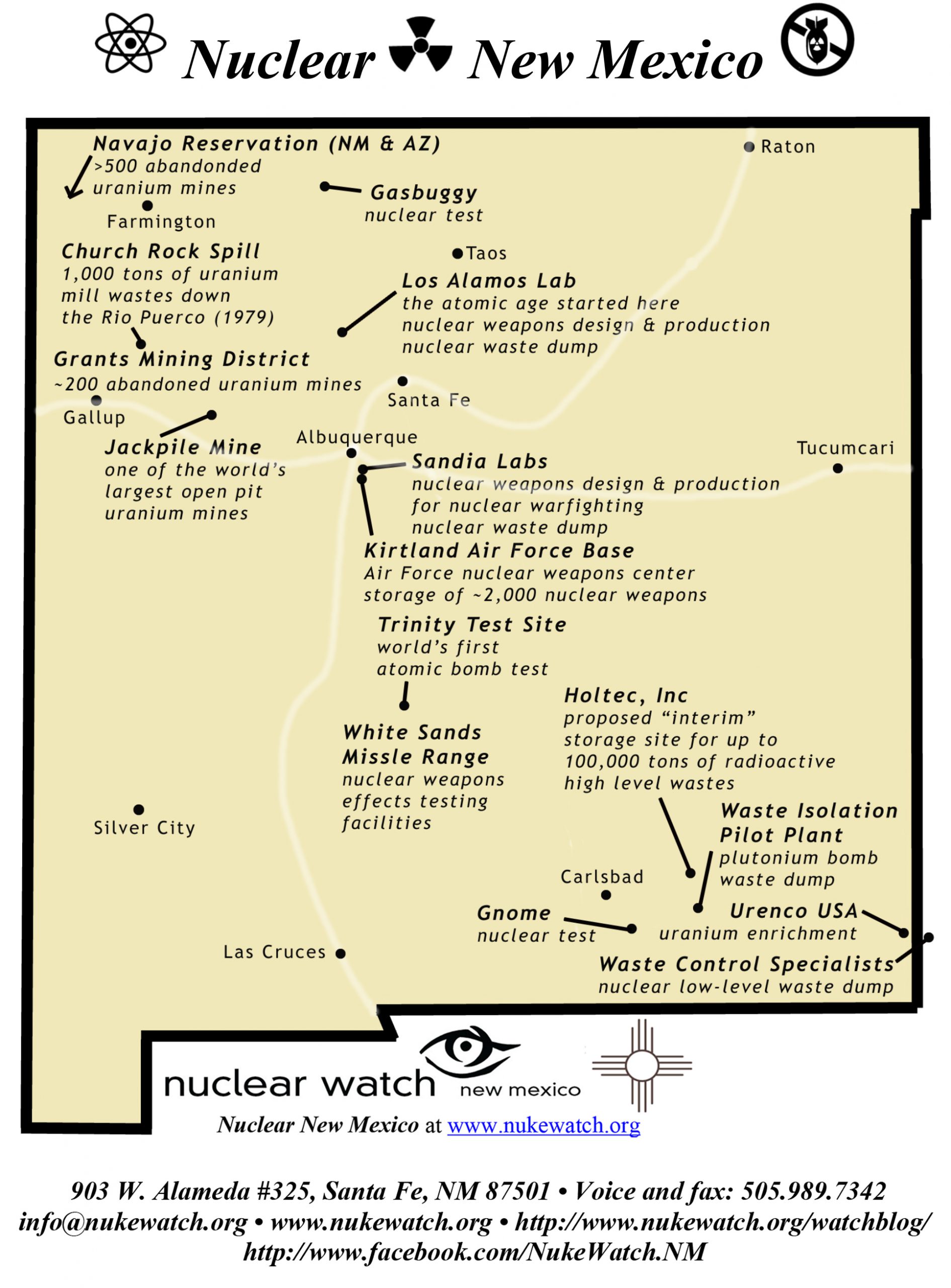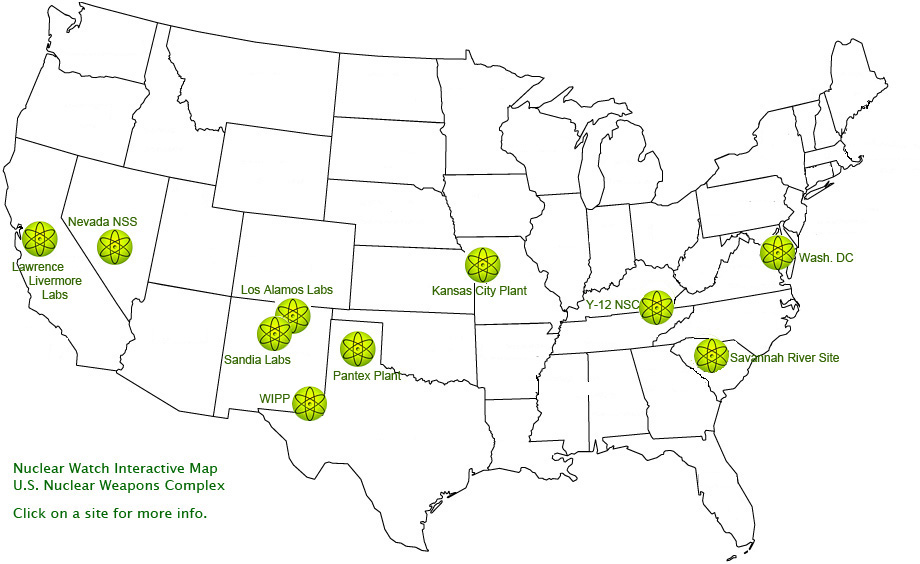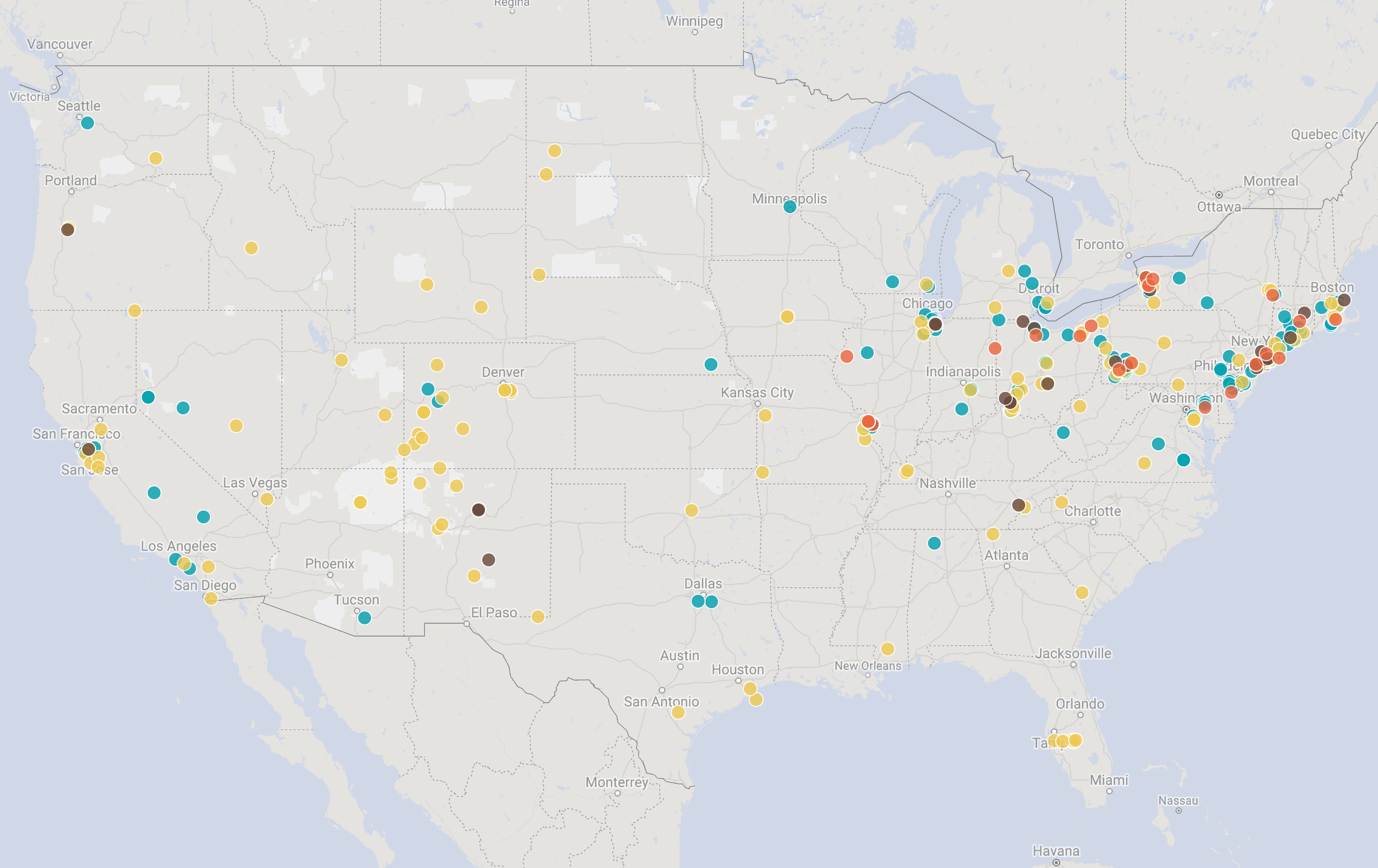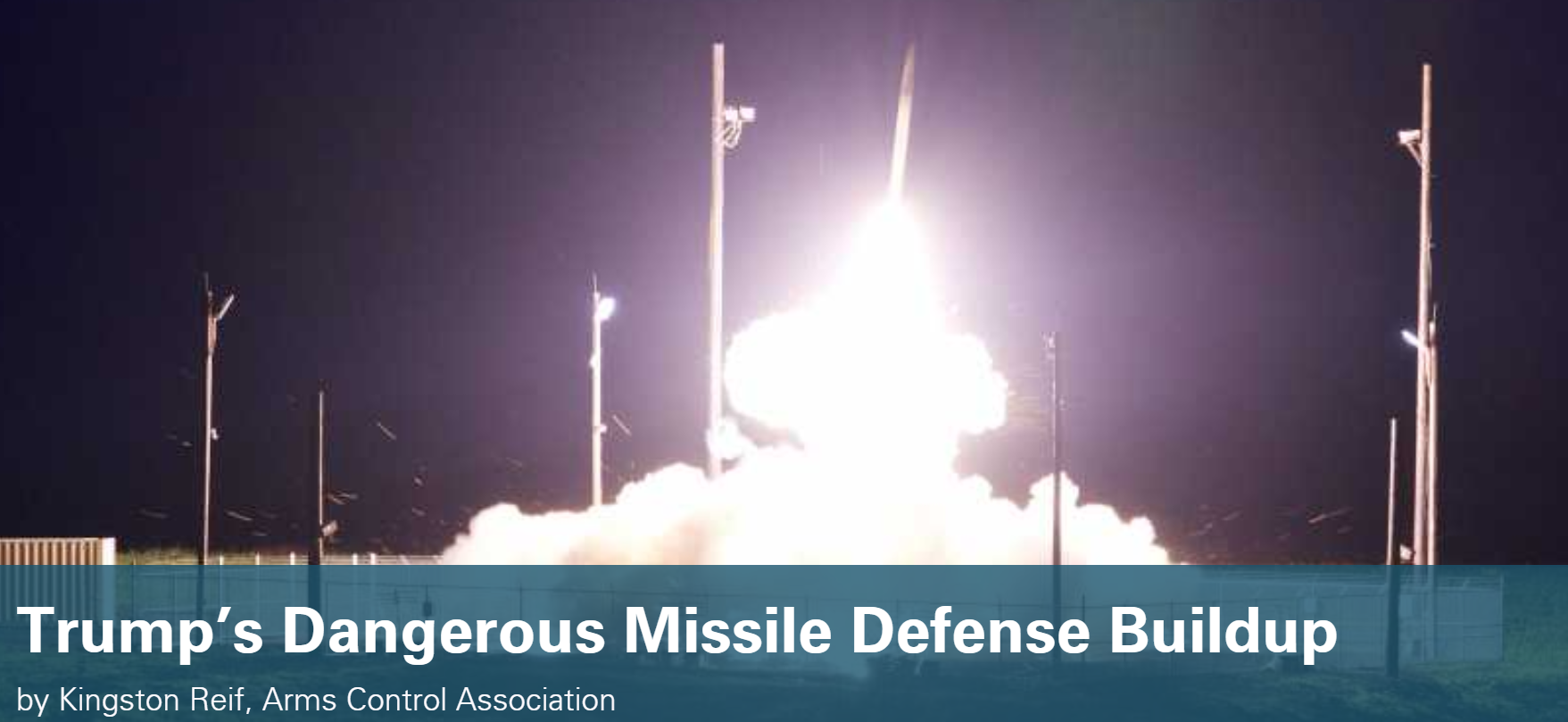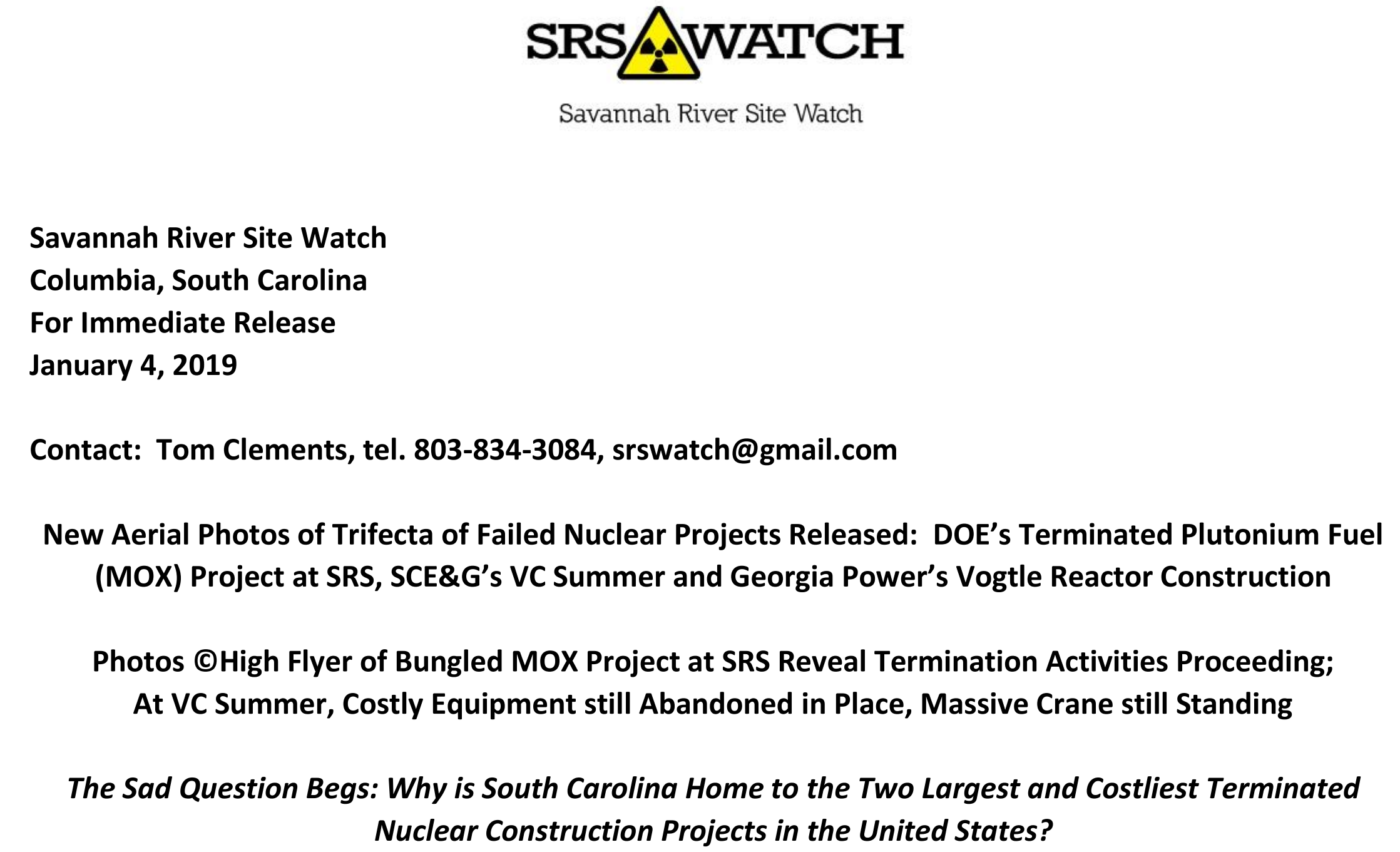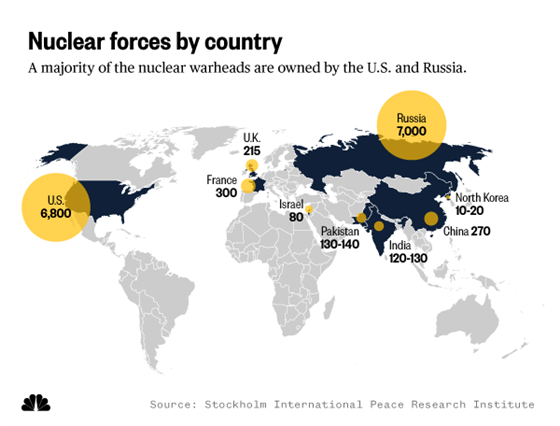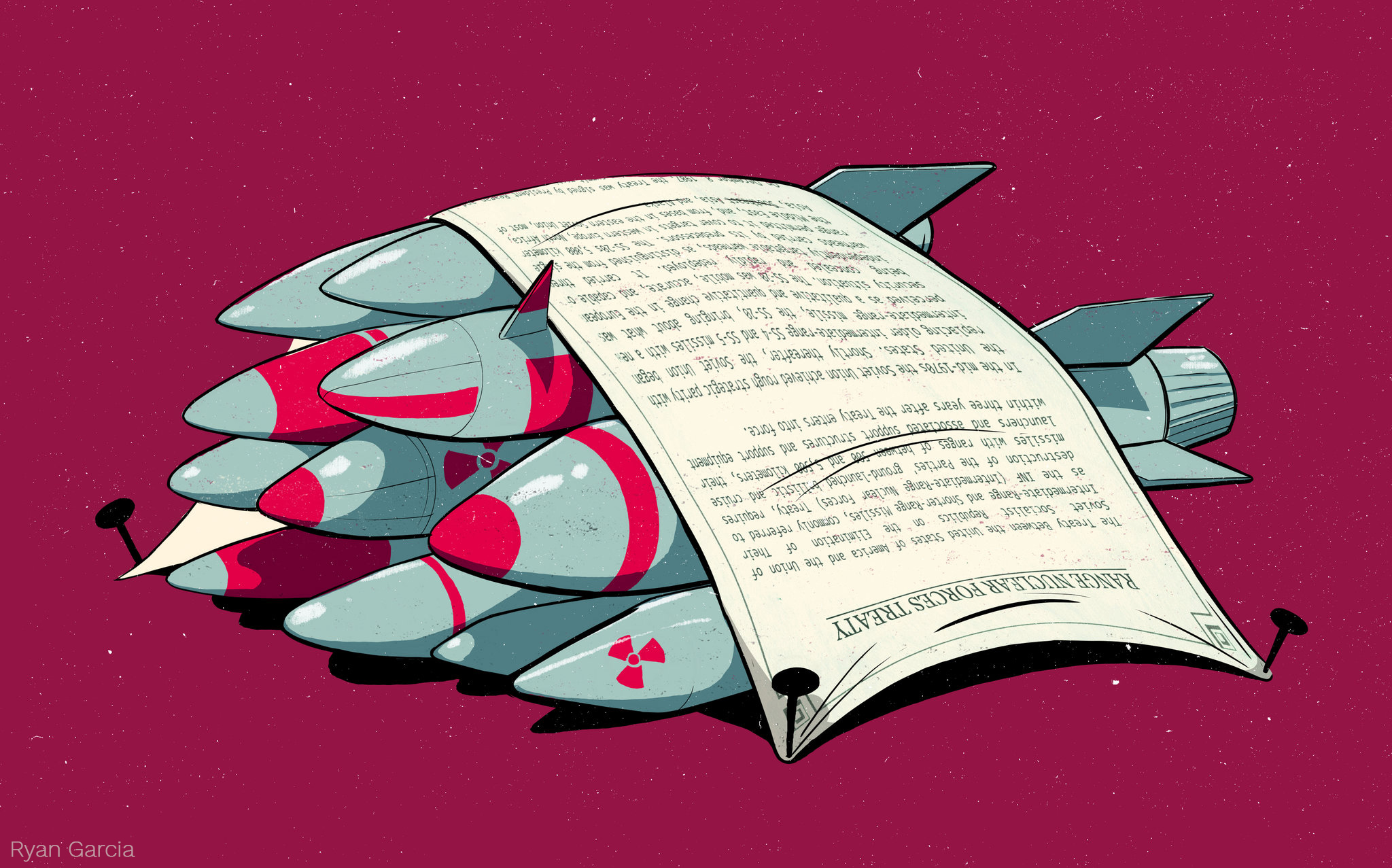QUOTE OF THE WEEK
Nothing Found
It seems we can’t find what you’re looking for. Perhaps searching can help.
LANL’s Central Mission: Los Alamos Lab officials have recently claimed that LANL has moved away from primarily nuclear weapons to “national security”, but what truly remains as the Labs central mission? Here’s the answer from one of its own documents:
LANL’s “Central Mission”- Presented at: RPI Nuclear Data 2011 Symposium for Criticality Safety and Reactor Applications (PDF) 4/27/11
Banner displaying “Nuclear Weapons Are Now Illegal” at the entrance in front of the Los Alamos National Lab to celebrate the Entry Into Force of the Nuclear Weapon Ban Treaty on January 22, 2021
Nothing Found
It seems we can’t find what you’re looking for. Perhaps searching can help.
Follow the Money!
Map of “Nuclear New Mexico”
Nuclear Watch Interactive Map – U.S. Nuclear Weapons Complex
In 1985, US President Ronald Reagan and and Russian President Mikhail Gorbachev declared that “a nuclear war cannot be won and must never be fought.”
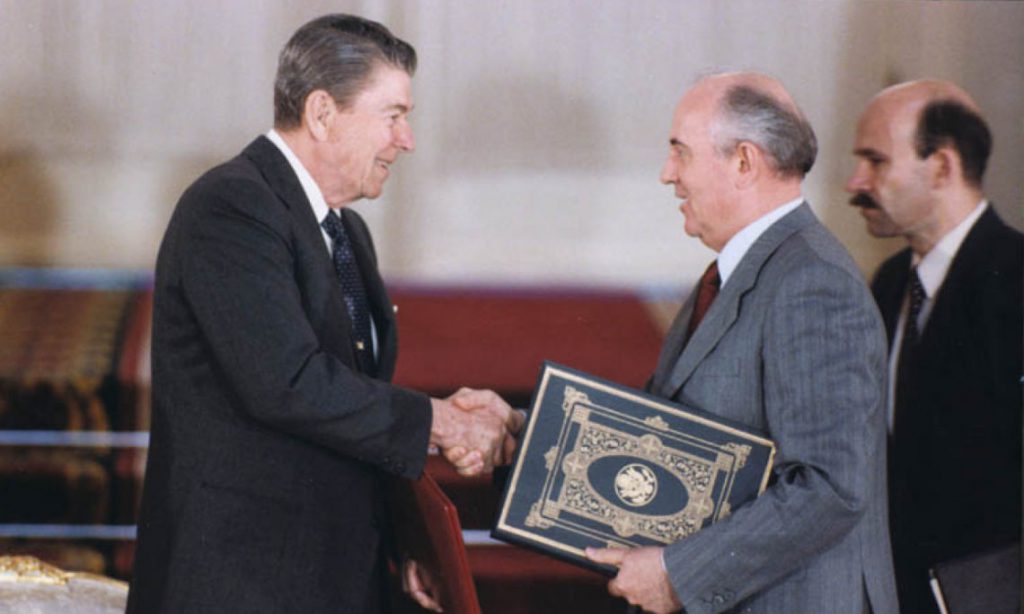
Waste Lands: America’s Forgotten Nuclear Legacy
The Wall St. Journal has compiled a searchable database of contaminated sites across the US. (view)
Related WSJ report: https://www.wsj.com
2022 BLOG POSTS
Nothing Found
It seems we can’t find what you’re looking for. Perhaps searching can help.
New & Updated
Smith Statement on Trump Missile Defense Review
Washington, DC – Today, House Armed Services Committee Chairman Adam Smith (D-WA) released the following statement about the Trump administration’s Missile Defense Review:
“The missile defense policy of the United States must follow some key principles.”
“First, it is essential that we ensure we are spending money on programs that are reliable and rigorously tested before they are deployed. We need to know that we are putting scarce taxpayer dollars to good use, for example improving reliability of the current system, rather than rushing to buy and deploy unproven missile defense systems. It is common sense to insist on this principle when it comes to programs that protect the American people and our allies, particularly in the context of the growing North Korea threat.
“Second, we must avoid missile defense policies that will fuel a nuclear arms race. Strategic stability is an essential component of U.S. national security, and it does not serve our long-term interest to take steps that incentivize Russia and China to increase the number and capability of their nuclear weapons.
“While it is essential that we continue investing in proven missile defense efforts, I am concerned that this missile defense review could lead to greater investment in areas that do not follow these principles, such as a space-based interceptor layer that has been studied repeatedly and found to be technologically challenging and prohibitively expensive.
“Moreover, we must consider missile defense and effective arms control policy as part of our deterrence capabilities. I am gravely concerned about President Trump’s broader strategy to withdraw us from international arms control agreements, dismiss allies, and expand the role of nuclear weapons in U.S. defense policy, which could further siphon funding from much-needed budget priorities and exacerbate a new nuclear arms race.”
armscontrol.org | January 17th, 2019
The Trump administration’s long-awaited Missile Defense Review, which was released today, proposes a significant and costly expansion of the role and scope of U.S. missile defenses that is likely to exacerbate Russian and Chinese concerns about the threat to their strategic nuclear deterrents, undermine strategic stability, and further complicate the prospects for additional nuclear arms reductions.
Of particular concern was President Donald Trump’s statement during his remarks at the Pentagon that the goal of U.S. missile defenses is to “ensure we can detect and destroy any missile launched against the United States anywhere, anytime, anyplace.” This would be a costly, unachievable, and destabilizing departure from longstanding policy and contradicts the text of the review, which limits U.S. homeland missiles defense to their traditional role of defending against limited attacks from North Korea or Iran. Continue reading
NukeWatch Joins Suit To Stop WIPP Expansion
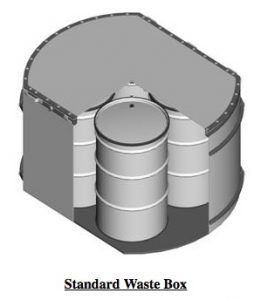
NukeWatch Joins Suit To Stop WIPP Expansion
On January 17, 2019, Southwest Research and Information Center (SRIC) and Nuclear Watch New Mexico (NWNM) filed an appeal in the New Mexico Court of Appeals to overturn the New Mexico Environment Department (NMED) approval of the Waste Isolation Pilot Plant (WIPP) Disposal Volume permit modification, which was issued on December 21, 2018.
The modification would allow expansion of WIPP’s capacity by approximately 30 percent and was issued over the repeated opposition of many New Mexico organizations.
Permit Changes at WIPP Face Challenges
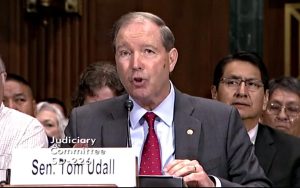
By Mark Oswald | Journal Staff Writer
abqjournal.com | Sunday, January 13th, 2019 at 12:01am
U.S. Sen. Tom Udall is encouraging Gov. Michelle Lujan Grisham’s new administration to reconsider a state government decision made just before she took office Jan. 1 that changes how radioactive waste volume is measured at the Waste Isolation Pilot Plant, in effect allowing more waste to placed in the underground repository near Carlsbad.
Udall said last week that limits on how much waste WIPP can hold were critical to federal-state negotiations that led to WIPP’s creation “and were a major reason New Mexico agreed to this mission in the first place.”
“I am encouraging the new administration to take a hard look at this action, and hopeful that it will pause and reconsider this last-minute change that has major ramifications for our state,” the senator said in an email statement.
The controversial state permit modification for WIPP, approved by then-New Mexico Environment Department Secretary Butch Tongate on Dec. 21, changes the way waste volume is calculated to exclude empty space inside waste packaging. With the alteration, WIPP becomes only about a third full instead of 50 percent full.
Continue reading
An inspector monitors radiations around containers at Los Alamos National Laboratory in 2003 prior to shipping nuclear waste to the Waste Isolation Pilot Plant near Carlsbad. New Mexican file photo; Drums of transuranic waste are stored inside a salt cavern at the Waste Isolation Pilot Plant in Carlsbad in 2006. Los Angeles Times file photo
By Rebecca Moss rmoss@sfnewmexican.com
santafenewmexican.com | Jan 5, 2019 Updated Jan 6, 2019
In the final days of Republican Gov. Susana Martinez's administration, the state Environment Department approved a controversial change to how federal officials measure the amount of nuclear waste buried some 2,000 feet underground in Southern New Mexico salt beds.
Proponents of the change say it merely clarifies that the storage site will measure the actual volume of transuranic waste deposited there rather than the volume of the massive exterior waste drums, called overpack containers — and the air inside. But critics say the result will be an increase in the quantity of material stored at the U.S. Department of Energy's Waste Isolation Pilot Plant near Carlsbad.
Several nuclear watchdog groups, which say they intend to appeal the decision, also fear the change in WIPP's hazardous waste permit from the state could open the door to allowing high-level nuclear waste to be brought into New Mexico.
Jon Kyl Voted for New Nukes After Taking Payments From Nuclear Company
The senator-turned-lobbyist-turned-senator-turned-lobbyist had a paid board seat at one nuclear company and lobbied for two others. Then he joined the Senate.
WASHINGTON, DC – SEPTEMBER 05: U.S. Sen. John Kyl (R-AZ) awaits Vice President Mike Pence before a mock swear-in ceremony on September 5, 2018 in Washington, DC. The former senator Kyl was tapped by Arizona Gov. Doug Ducey to replace the late Sen. John McCain. (Photo by Zach Gibson/Getty Images)By Alex Kotch readsludge.com | JAN 10, 2019 4:10PM EST
After almost 30 years of a program to clean up dangerous defense waste at the Hanford nuclear site in southeastern Washington, the Department of Energy now wants to change the rules to make the job easier and save money. If approved, the proposal poses new dangers to the health and safety of people and the environment — not just in southeastern Washington, but at nuclear sites around the country.
After Sen. John McCain’s death in August 2018, Arizona Gov. Doug Ducey appointed former Republican Senator Jon Kyl to replace him—despite Kyl having spent years lobbying his former colleagues for an array of defense, utility, nuclear, tech, and social media companies that have business before the chamber. Government watchdogs warned of potential ethics issues, but Kyl was allowed to step aside from his K Street job and work on legislation without acknowledging conflicts of interest or recusing himself.
News broke on Monday that Kyl is rejoining his previous employer, lobbying firm Covington & Burling, after his four-month stint in the Senate.
Renew Nuclear Arms Control, Don’t Destroy It
By Andrew Lichterman and John Burroughs
Andrew Lichterman is Senior Research Analyst for Western States Legal Foundation, based in Oakland, California. John Burroughs is Executive Director of Lawyers Committee on Nuclear Policy, based in New York City.
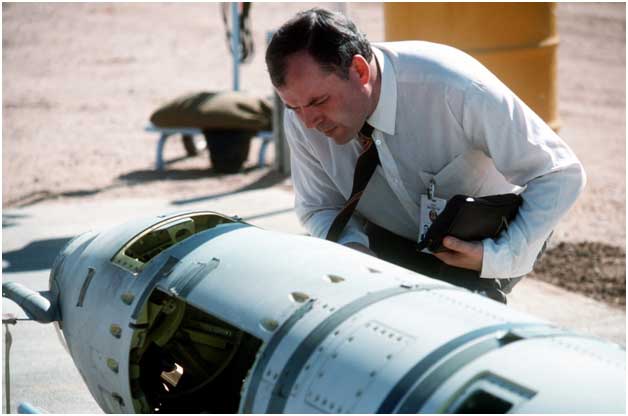
ipsnews.net | NEW YORK, Jan 2 2019 (IPS)
A hard-earned lesson of the Cold War is that arms control reduces the risk of nuclear war by limiting dangerous deployments and, even more important, by creating channels of communication and understanding. But President Donald Trump and his National Security Advisor John Bolton appear to have forgotten, or never learned, that lesson.
In late October, Trump announced an intent to withdraw from the Intermediate-Range Nuclear Forces (INF) Treaty. Secretary of State Mike Pompeo subsequently stated that the US will suspend implementation of the treaty in early February. While US signals have been mixed, initiation of withdrawal at that point or soon thereafter appears likely.
Don’t let feds change the rules for cleaning up Hanford nuclear waste
The public can comment on the U.S. Department of Energy’s proposed changes to Hanford nuclear waste cleanup rules until Jan. 9.
A sign warns of high levels of radiation near a valve at the “C” tank farm of the Hanford Nuclear Reservation near Richland. (AP Photo / Ted S. Warren, 2014)By Tom Carpenter
NukeWatch NM and Hanford Challenge are both members of the Alliance for Nuclear Accountability.
seattletimes.com | Originally published January 2, 2019 at 3:11 pm
After almost 30 years of a program to clean up dangerous defense waste at the Hanford nuclear site in southeastern Washington, the Department of Energy now wants to change the rules to make the job easier and save money. If approved, the proposal poses new dangers to the health and safety of people and the environment — not just in southeastern Washington, but at nuclear sites around the country.
In 1943, the U.S. government built the massive complex at Hanford to manufacture plutonium for nuclear weapons. When defense production ceased in 1986, its nine reactors had produced enough material for 60,000 atomic bombs. What remains is North America’s most contaminated site — more than half a billion gallons of nuclear waste and toxic chemicals stored in leaking tanks and dumped into the ground.
Columbia, SC – New aerial photos by pilot High Flyer of the nation’s costly and bungled nuclear construction projects are being released by Savannah River Site Watch.
Of primary importance, the photos – linked in “notes” below – reveal details at the Department of Energy’s terminated plutonium fuel (MOX) project at the Savannah River Site (SRS) near Aiken, SC and the canceled SCE&G/Dominion V.C. Summer AP100 reactor construction project near Jenkinsville, SC. The photos, taken on December 16, 2018, are being released in the public interest and can be used for free with proper credit (©High Flyer – see copyright statement at each photo section).
Also released are photos of Georgia Power’s bungled Vogtle nuclear reactor construction near Waynesboro, GA (and just across the Savannah River from SRS), the leaking Westinghouse uranium fuel fabrication facility near Columbia, SC and a large solar facility near Pelion, SC.
Vladimir Putin on nuclear war: U.S. is pushing world ‘closer to a very dangerous line
The U.S. is threatening to suspend a Cold War treaty limiting medium-range missiles because it says one of Russia’s weapons violates the agreement.
By Yuliya Talmazan and Alexander Smith
Russian President Vladimir Putin warned Thursday that the world is underestimating the threat of nuclear war and blamed the U.S. for risking a collapse in global arms controls.
nbcnews.com | Dec. 20, 2018 / 1:16 AM PST / Updated Dec. 20, 2018 / 7:04 AM PST
The U.S. is threatening to suspend a Cold War treaty limiting medium-range missiles because it says one of Russia’s weapons violates the agreement.
During his annual marathon news conference Thursday, Putin insisted that Washington was to blame. Most experts agree Russia has been violating the Intermediate-Range Nuclear Forces Treaty, signed in 1987 by President Ronald Reagan and Soviet leader Mikhail Gorbachev.
However, many of those same analysts have criticized President Donald Trump for walking away from the INF Treaty. They argue that quitting it won’t bring Russia into line, and instead could trigger an arms race with ground-based nuclear missiles returning to Europe for the first time in decades.Continue reading
– DEPT. OF ENERGY HAD COMMITTED TO CLEANING UP ALL CONTAMINATION, NOW SAYS IT WILL LEAVE 98% OF CONTAMINATED SOIL NOT CLEANED UP – JUST WEEKS AFTER WOOLSEY FIRE BURNS SITE
– NEW REPORT DEVASTATES TOXIC AGENCY ASSURANCES THAT FIRE CAUSED NO TOXIC RELEASES
The Trump Administration’s Department of Energy (DOE) has announced it intends to leave almost all of the contaminated soil in its area of the Santa Susana Field Laboratory (SSFL) not cleaned up, despite admitting that would violate the legally binding agreement it entered into with California in 2010. The breach of long-standing promises is included in the final Environmental Impact Statement (EIS) for the SSFL cleanup, released by the Department of Energy on December 18, 2018.
Don’t Tear Up This Treaty
Arms control isn’t perfect. But abandoning treaties without a plan for the future is dangerous.
The Editorial Board
The editorial board represents the opinions of the board, its editor and the publisher. It is separate from the newsroom and the Op-Ed section.
nytimes.com | Dec. 15, 2018
Every American president from John F. Kennedy to Barack Obama has successfully negotiated an agreement with the Soviet Union, or the Russian federation, to reduce the threat from both countries’ vast nuclear arsenals. More than a dozen treaties limiting nuclear testing, nuclear weapons, activities in outer space and missile defense have been part of this mix.
The need for such restraint is irrefutable: No weapons are more lethal and potentially more destabilizing to the world than those that have earned the moniker “city killers.”Continue reading
Letter from 26 Senators Responding to Trump’s Nuclear Policy

FOR IMMEDIATE RELEASE: Thursday, December 13, 2018
FOLLOWING PRESIDENT TRUMP’S ALARMING DECISION TO DEVELOP NEW NUCLEAR WEAPONS WHILE ALSO MOVING TO UNILATERALLY ABANDON THE BIPARTISAN NUCLEAR TREATIES THAT HAVE HELPED KEEP THE WORLD SAFE FROM NUCLEAR WAR FOR DECADES, SENATORS GILLIBRAND, MERKLEY, WARREN, MARKEY, FEINSTEIN, KLOBUCHAR LEAD GROUP OF 26 SENATORS IN CALLING ON PRESIDENT TRUMP TO WORK TO PRESERVE THESE VITALLY IMPORTANT TREATIES, AVOID DRAGGING OUR COUNTRY INTO A DANGEROUS NEW NUCLEAR ARMS RACE WITH RUSSIA
Senators: “Your Administration’s Efforts to Double Down on New, Unnecessary Nuclear Weapons While Scrapping Mutually Beneficial Treaties Risks the United States Sliding Into Another Arms Race with Russia and Erodes U.S. Nonproliferation Efforts Around the World”
ACTION ALERTS
Nothing Found
It seems we can’t find what you’re looking for. Perhaps searching can help.
Nothing Found
It seems we can’t find what you’re looking for. Perhaps searching can help.
Interfaith Panel Discussion on Nuclear Disarmament - August 9
Nothing Found
It seems we can’t find what you’re looking for. Perhaps searching can help.
New Nuclear Media
Nothing Found
It seems we can’t find what you’re looking for. Perhaps searching can help.

